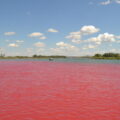[ad_1]
Scientists with the U.S. Geological Survey, Montana Fish, Wildlife & Parks and the University of Montana studied how climate change affected trout fisheries across 3,100 miles of rivers in Montana from 1983 to 2017. They found that over the past several decades, Montana’s trout fishing economy was resilient in the face of climate extremes. However, they also found that 35% of Montana’s cold-water habitats may no longer be suitable for trout by 2080, resulting in the loss of $192 million per year in state revenue.
“Trout fisheries have enormous cultural, economic and ecological importance in Montana and worldwide, yet even Montana’s resilient trout fisheries could be vulnerable to future climate change,” said Timothy Cline, a USGS scientist and the study’s lead author.
The study found that several extreme droughts reduced streamflows and increased water temperatures, causing stressful conditions for trout and numerous fishing site closures in Montana. Anglers responded to droughts by moving to cooler fishing locations that were more favorable to trout during extreme conditions.
“By moving to other fishing areas that were more favorable during drought, visitors kept trout fishing revenue in the state rather than choosing to travel elsewhere,” Cline said. “Trout fishing in Montana has been remarkably resilient to changing conditions.”
The concentration of anglers fishing in the region doubled during the study period. Cold-water sections of river, where trout were dominant, had 10 times the number of anglers than nearby warmer-water sections, and most of those anglers were visitors from out of state. These findings demonstrate that trout fishing was a significant recreational draw and economic contributor to Montana despite drought conditions.
However, the continued loss of suitable trout habitat could further test the resiliency of the state’s fishing economy in coming decades. Montana could lose almost $200 million per year in angling revenue, or about 30% of its current trout fishing economy, according to the study.
“Our findings underscore the importance of maintaining a diversity of cold-water habitats and streamflows that provide options for anglers to move to as conditions change,” said Clint Muhlfeld, a USGS scientist and co-author on the study. “Such diversity could help mitigate the socioeconomic impacts of climate change on valuable freshwater fisheries.”
The study is published in the journal Science Advances. For more information on fishery research in the Rocky Mountains, please visit the USGS Northern Rocky Mountain Science Center website.
[ad_2]
Source link
- Warmer water could cool Montana’s trout fishing economy - September 7, 2022
- Water Released from Crystallizing Magma can Trigger Earthquakes in Yellowstone - September 5, 2022
- Thermal Infrared Remote Sensing at Yellowstone 101 - August 29, 2022



